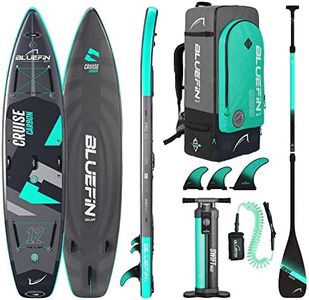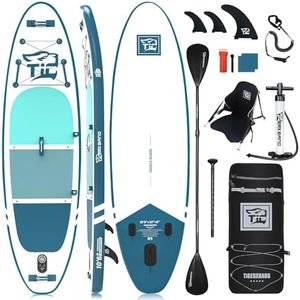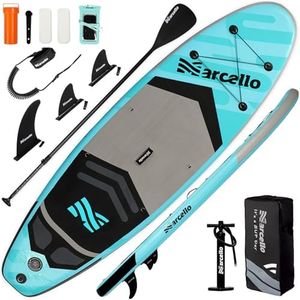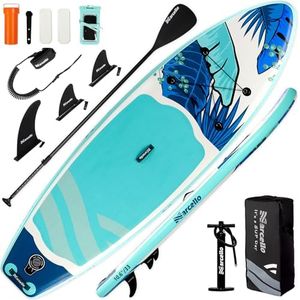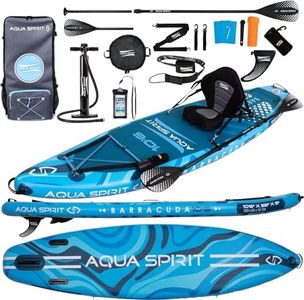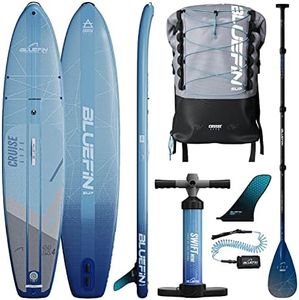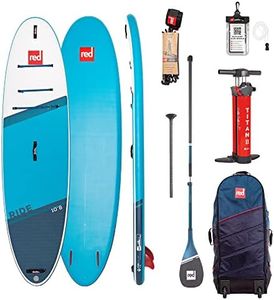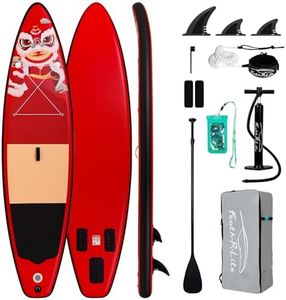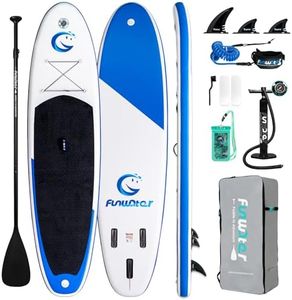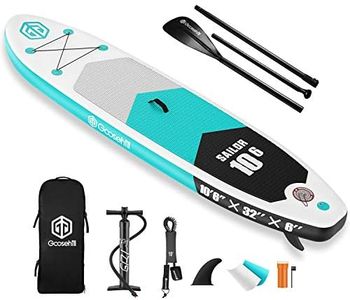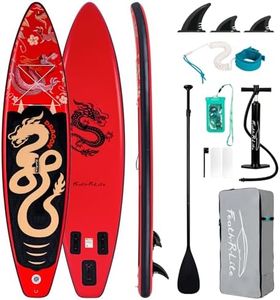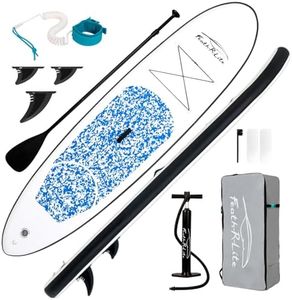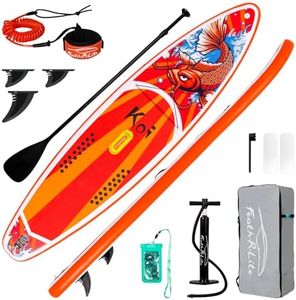We Use CookiesWe use cookies to enhance the security, performance,
functionality and for analytical and promotional activities. By continuing to browse this site you
are agreeing to our privacy policy
10 Best Stand Up Paddle Boards
From leading brands and best sellers available on the web.Buying Guide for the Best Stand Up Paddle Boards
Choosing the right stand-up paddle board (SUP) can greatly enhance your paddling experience, whether you're a beginner or an experienced paddler. The key is to find a board that matches your skill level, intended use, and physical characteristics. Consider where you'll be paddling most often, your weight and height, and what type of paddling you want to do, such as touring, racing, or yoga. By understanding the different specifications and how they relate to your needs, you can make an informed decision and enjoy your time on the water.Board TypeThe type of stand-up paddle board you choose should align with your intended use. There are several types, including all-around, touring, racing, and yoga boards. All-around boards are versatile and suitable for beginners, as they perform well in various conditions. Touring boards are designed for long-distance paddling and are more stable and efficient in the water. Racing boards are narrower and longer, built for speed and performance. Yoga boards are wider and more stable, providing a solid platform for exercises. Consider what activities you plan to do most often and choose a board type that supports those activities.
Board LengthThe length of a stand-up paddle board affects its speed, stability, and maneuverability. Shorter boards, typically under 10 feet, are more maneuverable and suitable for surfing or children. Medium boards, ranging from 10 to 12 feet, are great for all-around use and are often recommended for beginners. Longer boards, over 12 feet, are faster and track better, making them ideal for touring or racing. Consider your skill level and the type of paddling you plan to do when choosing the length. Beginners might prefer a medium-length board for its balance of stability and versatility.
Board WidthWidth is a crucial factor in determining the stability of a stand-up paddle board. Wider boards, typically 31 inches or more, offer more stability and are great for beginners or those practicing yoga. Narrower boards, around 28 to 30 inches, are faster and more suitable for racing or experienced paddlers. If you're new to paddle boarding or plan to do activities that require balance, such as yoga, opt for a wider board. If speed and performance are your goals, a narrower board might be more appropriate.
Board ThicknessThe thickness of a stand-up paddle board affects its volume and buoyancy. Thicker boards, usually around 6 inches, provide more buoyancy and are better for heavier paddlers or those carrying extra gear. Thinner boards, around 4 inches, are lighter and may be more suitable for lighter paddlers or those seeking a closer connection to the water. Consider your weight and any additional gear you might carry when choosing the thickness. A thicker board can offer more stability and support for heavier loads.
Board VolumeVolume is a measure of a board's buoyancy and is expressed in liters. It combines the board's length, width, and thickness to determine how much weight it can support. Higher volume boards can support more weight and are generally more stable, making them suitable for beginners or heavier paddlers. Lower volume boards are less buoyant and more responsive, ideal for lighter paddlers or those seeking performance. Match the board's volume to your weight and skill level to ensure it provides adequate support and stability.
Construction MaterialThe material of a stand-up paddle board affects its weight, durability, and performance. Inflatable boards are made from PVC and are lightweight, portable, and durable, making them great for travel and storage. Epoxy boards are made from foam and fiberglass, offering better performance and speed but are less portable. Consider where and how you plan to use your board. If you need something easy to transport and store, an inflatable board might be best. For better performance and speed, an epoxy board could be more suitable.
